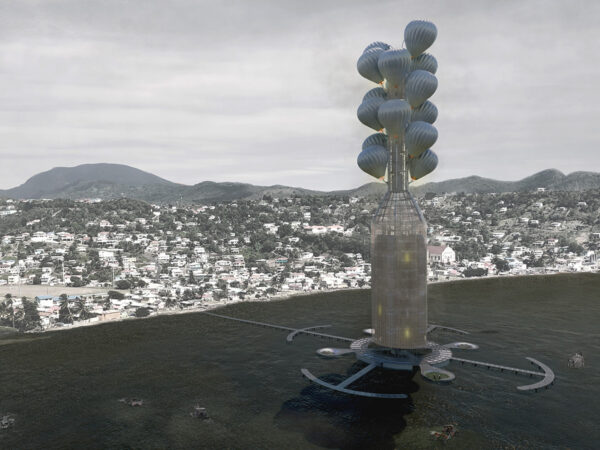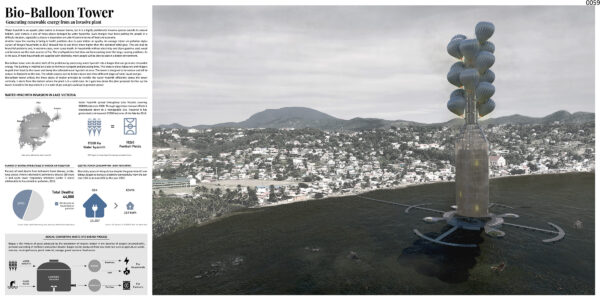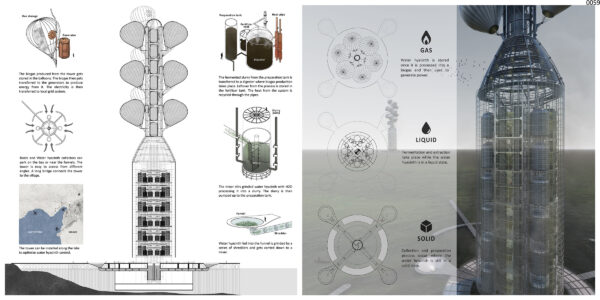2021 Skyscraper Competition
Editors’ Choice
Raymond Yoo, Yejin Park, Angela Yeom
New Zealand
Water hyacinth is an aquatic plant native to Amazon basins, but it is a highly problematic invasive species outside its natural habitat. Lake Victoria is one of many places damaged by water hyacinths. Such changes have been putting the people in a difficult situation, especially as Kenya is dependent on Lake Victoria in terms of food and economy.
Another issue the country is facing is health problems due to poor indoor air quality. An average indoor air pollution stylus survey of Kenyan households in 2017 showed that it was three times higher than the standard WHO gave. This can lead to bronchial problems and, in extreme cases, even cause death. In households without electricity and clean gasoline, coal, wood, and kerosene are the main sources of fire. The small particles that blow out from cooking enter the lungs, causing problems. As is the case, if more households are supplied with electricity, more people will be able to cook in a better environment.
Bio-balloon tower aims to solve both of the problems by processing water hyacinth into biogas that can generate renewable energy. The building is installed on a lake to minimize transport and processing time. This feature allows laborers and villagers to park their boats by the tower and dump the collected water hyacinth at once. The tower is designed to be narrow and tall to reduce its footprint on the lake. The whole process can be broken down into three different stages solid, liquid, and gas.
Bio-balloon tower utilizes the three states of matter principle to transfer the water hyacinth efficiently across the tower vertically. It starts from the bottom where the plant is in a solid state. As it gets less dense the plant proceeds further up the tower. It reaches the top when it is in a state of gas and gets used up to generate power.

















